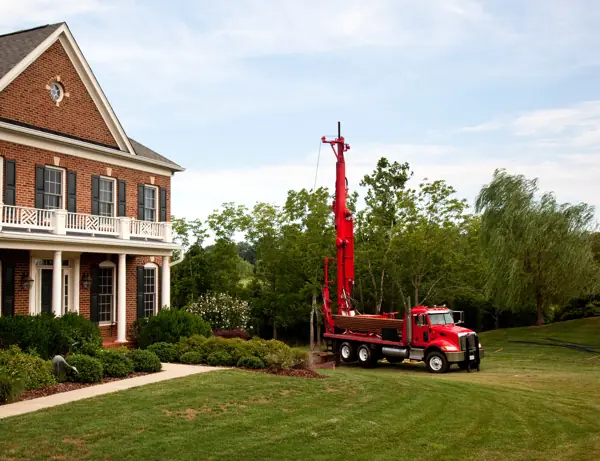If you’re considering drilling a well on your property, one of the most important questions you’ll need to answer is: how deep should my well be? The answer to this question depends on a variety of factors, including the location of your property, the geology of the area, and your water needs.
In this blog post, we’ll explore some of these factors in more detail to help you make an informed decision about the depth of your well.
Location
The location of your property plays a big role in determining how deep your well needs to be. In general, areas that receive more rainfall and have higher water tables will require shallower wells than areas with lower rainfall and lower water tables. Additionally, if you live near a river or other body of water, you may need to drill deeper to reach groundwater.
Another important consideration is whether there are any nearby sources of contamination that could affect the quality of your well water. If you live near agricultural land or industrial facilities, for example, you may need to drill deeper to avoid contamination from pesticides or chemicals.
Additionally, if you’re near an area with a high water table, such as in a coastal region or near a lake, it’s important to make sure your well is deep enough to prevent saltwater intrusion.
Finally, it’s important to assess the local geology of where you live. Different kinds of rock and soil can affect how deep your well needs to be; for example, sandstone may require deeper wells than shale.
Certain geological structures like underground caverns or faults could impact how far down you need to drill. Consulting a licensed geologist can help ensure that your well is drilled to the proper depth.
Geology
The geology of your area can also impact the depth of your well. Different types of rock and soil have different permeability levels, which affects how easily water can flow through them.
If you live in an area with porous rock or soil (like sandstone), you may be able to drill a shallower well and still get good water flow. On the other hand, if you live in an area with impermeable rock or clay soils, you may need to drill deeper to reach groundwater.
It’s also worth noting that some areas have layers of different types of rock and soil that can impact the depth at which groundwater is found. For example, if there is a layer of impermeable shale between two layers of permeable sandstone, you may need to drill through the shale layer to access groundwater.
It’s important to know the geology of your area before you start digging so that you can choose the right drill bit and drilling technique for optimal results. Finally, it’s essential to conduct a hydrogeological survey to assess soil porosity and water availability in order to determine the best place to drill your well. This is a key step in ensuring a successful well installation and long-term water supply.
By understanding the local geology of your area, you will be able to plan ahead when drilling a well and make an informed decision about how deep it needs to go. Good luck!
The depth of your well is also affected by groundwater levels, which vary from region to region depending on factors like climate
Water Needs
The quantity of water that you will require is, of course, one of the most important aspects to consider when calculating the optimal depth of your well. If you simply require a little amount of water on a daily basis (for example, if it’s just you living on the land), then a well with a shorter depth might be sufficient for your needs.
On the other hand, if you have a sizable family or if you intend to use a significant amount of water for purposes such as irrigation or watering livestock, then you will probably require a deeper well.
When determining the optimal depth of your well, you should also think about the water requirements of the future. If you have plans to increase the size of your property or construct additional buildings in the near future (both of which will result in an increased demand for water), it may make sense to drill a deeper well at this time so that it can meet the requirements of your anticipated expansion or new construction.
In conclusion, when determining the depth of your well, you should also take into account the type of soil that is found in the surrounding area. Permeability levels vary from soil type to soil type, and these differences can affect how rapidly water accumulates and drains.
If you live in an area that has soil that is very permeable and rapidly absorbs water, then you will likely need to dig a deeper well than you would if you lived in an area that had soil that was more dense.
Before commencing any work on your property, you should make sure to consult with an expert drilling contractor regardless of the type of soil that is present there. This will allow them to recommend the optimal depth for your particular requirements.
Conclusion
As we’ve seen, many factors go into determining how deep your well should be. Location (including rainfall and proximity to potential sources of contamination), geology (including permeability levels and layers), and water needs all play important roles in this decision.
Ultimately, drilling a well is a big investment – both financially and in terms of time and effort – so it’s worth taking the time to carefully consider all these factors before deciding how deep your well should be. By doing so, you can ensure that you’re getting enough high-quality water for all your needs both now and in the future.
At Well Doctor LLC, we are experts in understanding the local geology and assessing water needs for well installations. Contact us today to find out more about how we can help you ensure a successful, long-term water supply for your property. We look forward to hearing from you soon!
Check out our blog page for helpful articles on everything related to wells, from installation and repair tips to general information on geology and hydrogeology.

